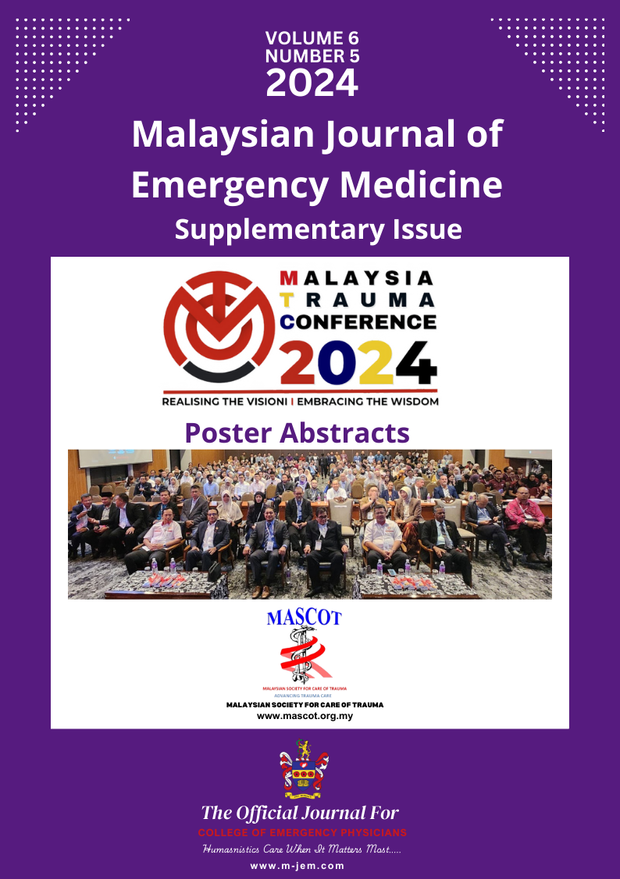A07 Subcutaneous Emphysema In Life-Threatening Airway Obstruction: A Case Report Of Rare Presentations Of Foreign Body Aspiration In Pediatrics.
Main Article Content
Abstract
INTRODUCTION
Tracheobronchial foreign body aspiration in children can present with varying degrees of severity, from mild cases to life-threatening emergencies. The aspiration of pen caps is particularly common among school-aged children and requires prompt intervention to prevent serious complications.
CASE DESCRIPTION
We report a 7-year-old Malay girl with a history of tonsillectomy who experienced choking while playing with her younger brother. She stated that her brother inserted a foreign body into her mouth, leading to bluish discoloration of her lips and vomiting. Upon arrival at the Emergency Department, she exhibited stridor, had an oxygen saturation of 88%, and displayed subcutaneous emphysema in her neck and chest areas. The patient was immediately referred to the Otorhinolaryngology (ORL), pediatric, and anesthesiology teams. Emergency direct laryngoscopy revealed a foreign body lodged in her left main bronchus. Despite multiple removal attempts, the foreign body remained stuck at the cricoid area. The patient was urgently transferred to a tertiary hospital, where bronchoscopy identified the rear part of a pen cap lodged in the right secondary bronchus. Despite further attempts, the foreign body remained lodged at the cricoid narrowing and was ultimately extracted via tracheostomy. The patient was monitored for five days and was discharged in good condition.
DISCUSSION
Foreign body aspiration (FBA) can manifest as coughing, wheezing, recurrent pneumonia, or respiratory distress. Occasionally, FBA presents with subcutaneous emphysema. The narrowness of pediatric airways can lead to significant airway distress if not treated promptly. Bronchoscopy is the preferred method for diagnosing and removing foreign bodies; however, anatomical challenges may complicate the procedure. If bronchoscopy fails, surgical intervention, such as tracheostomy, may be necessary.
CONCLUSION
Subcutaneous emphysema is a rare presentation of FBA. While bronchoscopy is preferred, readiness for surgical intervention is essential if initial attempts fail.
Metrics
Article Details

This work is licensed under a Creative Commons Attribution-NonCommercial 4.0 International License.

